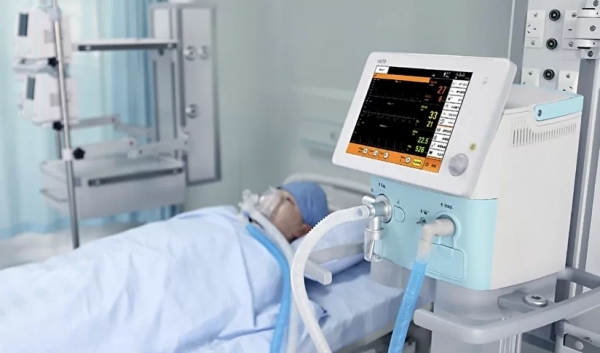
The ventilator, or respirator, is a medical device used in supplementing the respiratory function of a patient. The process is what doctors describe as artificial or mechanical ventilation. Medical specialists use ventilators when they encounter cases of respiratory distress or arrest. In other words, a ventilator comes in handy when the natural breathing capabilities of a patient cease to be sufficient to ensure an adequate supply of oxygen. Ventilators can also protect the lungs and airways of a patient until they regain their function.
How they work
According to ICU Equipments Manufacturers, artificial ventilation can be of two types – invasive and non-invasive. The purposes served by both include supporting the patient’s natural breathing when it becomes insufficient. Here are the differences between invasive and non-invasive ventilation.
Invasive – Invasive ventilation requires intubation of the patient. The ventilator delivers air through a tube inserted inside the trachea. The process may require doctors to resort to tracheotomy. It goes without saying that the process of invasive ventilation is riskier compared to non-invasive ventilation.
Non-invasive – Non-invasive ventilation doesn’t require intubation. The air gets delivered through a mask placed over the patient’s nose or mouth. This process is the least dangerous.
In both instances, the ventilator remains connected to the mask or tube and provides all phases of the patient’s respiratory cycle.
The main uses
There are several fields that may require patient ventilation, such as emergency care, operating room, and intensive care.
Emergency care – This process is about using easy-to-transport ventilators, especially in cases where the patient requires direct ventilation in the ambulance en route to the hospital.
Operating room – In this case, the ventilator has to be able to work with anesthetic gases. In most instances, such ventilators have to be integrated into the anesthesia stations.
Intensive care – To provide this type of care, ventilators have to be used for long-term treatments. The machines have several modes of ventilation.
Ventilator configuration
When it comes to setting up the different modes of ventilation, it’s crucial for doctors and medical personnel to familiarize themselves with the fundamental characteristics of the device. After purchasing the product from ICU Equipments Suppliers, you can ask them to help you learn more about the machine. Nonetheless, here’s a list of the primary parameters required in configuring the device.
The tidal volume
Pressure – you have to make a distinction between expiratory pressure and inspiratory pressure.
The inspiratory trigger
Inspiratory time
Respiratory rate
The inhalation-exhalation ratio
Expiration
Based on the regulations of today, ventilators have to meet the ISO 80601-2-12 for lung ventilators to be used in intensive care.
The risks
Ventilators aren’t always risky, but they can be problematic if you don’t set the ventilation parameters appropriately. Inappropriate tidal volume adjustment or patient-ventilator asynchronies can occur. If you wish to learn more about these problems, you should ask your ventilator supplier. You can also talk to fellow doctors and other medical personnel for support. Of course, they’ll provide you with the pertinent information the moment you choose to purchase a ventilator.





